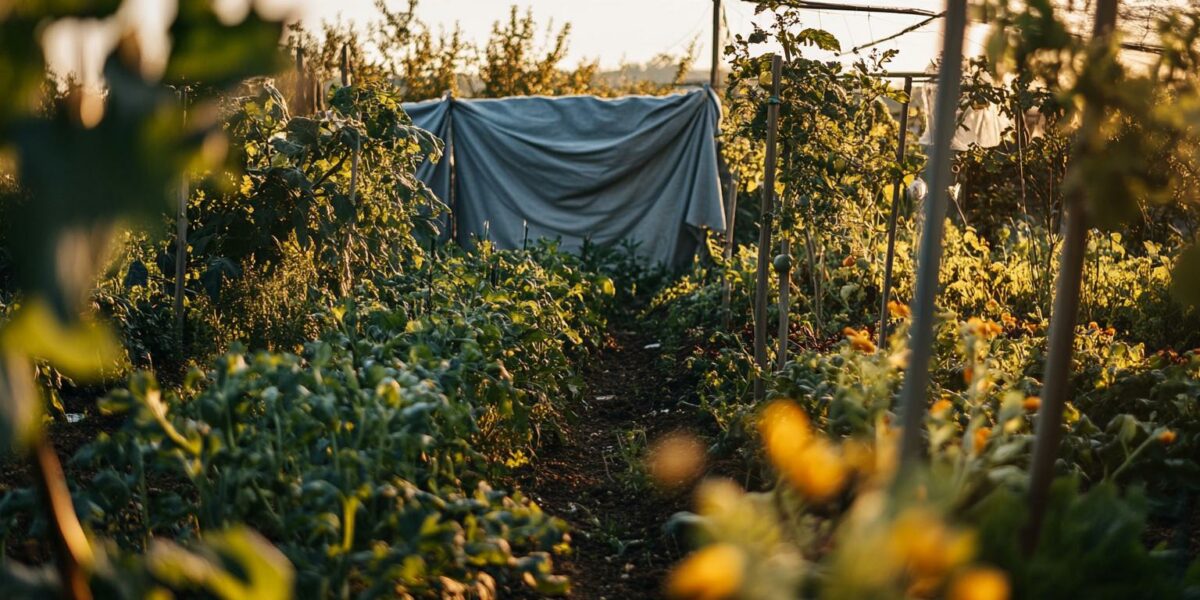Observing Climate Change Over Decades
Residing in west Washoe Valley for 36 years has allowed me to observe the shifts in climate firsthand. Initially, planting cold-sensitive crops before June 1 seemed risky, despite the average last frost date being May 15. However, this has gradually changed over the years.
Nowadays, with careful crop covering, I can often begin planting in mid- to late May. Earlier, multiple August freezes would force me to bring in green tomatoes for ripening. The average first frost date has shifted closer to October 1, moving from the previous September 15.
Many experienced gardeners in Northern Nevada might agree that the growing season is indeed longer. However, the unpredictable weather means one must always stay vigilant. Keep a close watch on nightly weather forecasts to protect cold-sensitive crops.
Old flannel sheets and blankets serve well for crop protection, as plastic can conduct cold. The likelihood of a freeze increases with clear skies, no wind, and temperatures in the mid- to upper 30s.
Utilizing Weather and Zone Maps
To ensure the survival of your plants, monitor the USDA Plant Zone map for average winter lows in your zip code. For instance, my area, 89704, along with 89701 and 89410, typically sees lows between 0 and 5 degrees Fahrenheit. Understanding these averages can inform your planting decisions.
Some regions might experience warmer temperatures. While I may not plant anything currently, those willing to try should consider using transplants instead of seeds. This can enhance the chances of plant survival in fluctuating conditions.
It’s crucial to recognize the cold hardiness of different crops. Here are a few examples with their lowest temperature tolerance:
- Kales: 20°F
- Spinach: 15-20°F
- Carrots: 5-15°F
Mulching plants heavily can help retain soil warmth, and row covers can offer additional protection during colder periods.
Cold-Hardy Crops and Their Resilience
Cold hardy crops can withstand varying temperatures. For example, kale can tolerate down to 20°F, while spinach and carrots can endure even lower temperatures. Consistent mulching and using row covers can significantly enhance their resilience against the cold.
Different varieties and microclimates can influence cold tolerance. Therefore, it’s essential to understand the specific needs of each plant to ensure they thrive in your garden. Experimenting with various protection methods can yield better results.
Row covers are particularly effective in shielding plants from extreme cold. They create a microenvironment that traps heat and keeps the soil warmer, providing a buffer against sudden temperature drops.
Gardening in Northern Nevada requires adaptability and vigilance. By staying informed and prepared, you can successfully navigate the challenges posed by climate changes and extend your growing season.
Conclusion: Adapting to a Changing Climate
The gradual lengthening of the growing season in west Washoe Valley is a testament to the ongoing impact of climate change. While this offers new opportunities for gardeners, it also demands greater awareness and adaptability to safeguard crops against unpredictable weather patterns.
Monitoring weather conditions closely and employing protective measures, such as using old flannel sheets instead of plastic, can make a significant difference. Clear skies and no wind are key indicators of a potential freeze, necessitating extra precautions.
Using the USDA Plant Zone map can guide gardeners in selecting appropriate crops for their region. This map provides valuable insights into average winter lows, aiding in better planning and preparation for planting.
Ultimately, the success of gardening in Northern Nevada hinges on understanding the cold hardiness of various crops and implementing effective protective strategies. With these tools, gardeners can continue to thrive despite the challenges posed by climate change.



lauren
Interesting read, but I’m curious: how accurate are these USDA Plant Zone maps in predicting local conditions?
coco
Thanks for the tip about using old flannel sheets instead of plastic. Never thought of that before!
leah
This study is eye-opening. What other impacts of climate change should we be aware of in Northern Nevada?
Charlotte1
Wait, did you say it’s getting warmer? I thought it was supposed to be getting colder! 😂
lily
Great post! I’ve definitely noticed similar changes in my own garden over the years.
Josiah_Ember0
Does anyone else think this makes gardening even more unpredictable? 🤔
charlottefrost
Thanks for sharing this detailed information! 😊 It’s really helpful for planning my garden.
MateoIllusion
Wow, this is really concerning! How much longer do you think our growing seasons will get?